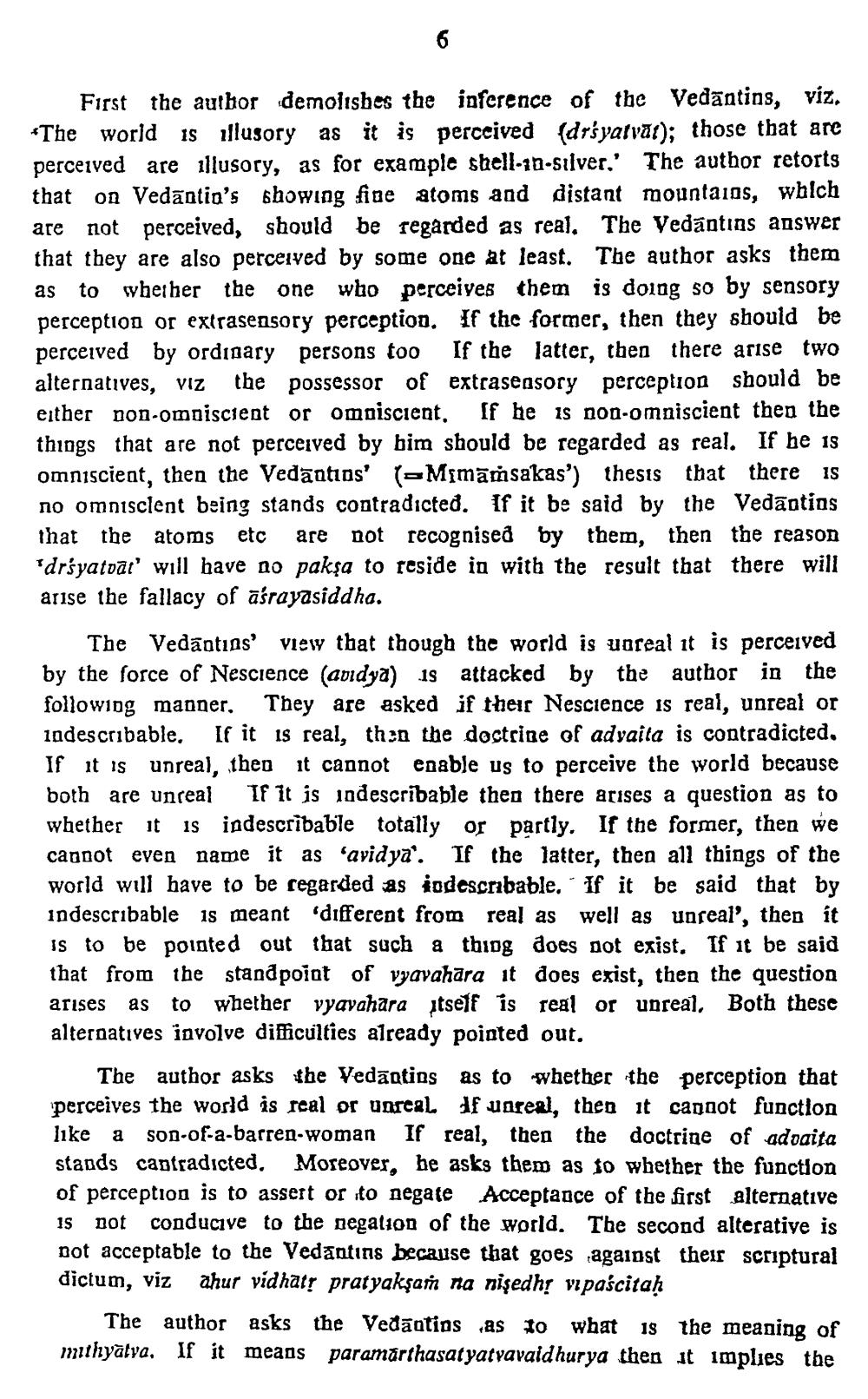________________
First the autbor demolishes the inference of the Vedāntins, viz. *The world is illusory as it is perceived (drsyatvas); those that are perceived are illusory, as for example shell-1n-silver.' The author retorts that on Vedāntin's showing fine atoms and distant mountains, wbich are not perceived, should be regarded as real. The Vedantins answer that they are also perceived by some one at least. The author asks them as to whether the one who perceives them is doing so by sensory perception or extrasensory perception. If the former, then they should be perceived by ordinary persons too If the latter, then there arise two alternatives, viz the possessor of extrasensory perception should be either non-omniscient or omniscient. If he is non-omniscient then the things that are not perceived by bim should be regarded as real. If he is omniscient, then the Vedāntios' (Msmāmsakas') thesis that there is no omnisclent being stands contradicted. If it be said by the Vedāntios that the atoms etc are not recognised by them, then the reason *drśyatdal' will have no pakşa to reside in with the result that there will arise the fallacy of aśrayasiddha.
The Vedāntias' view that though the world is uoreal it is perceived by the force of Nescience (avidya) is attacked by the author in the following manner. They are asked if their Nescience is real, unreal or indescribable. If it is real, then the doctrine of advaita is contradicted. If it is unreal, then it cannot enable us to perceive the world because both are unreal If it is indescribable then there arises a question as to whether it is indescribable totally or partly. If the former, then we cannot even name it as "avidya'. If the latter, then all things of the world will have to be regarded as iodescribable. If it be said that by indescribable is meant different from real as well as unreal', then it Is to be pointed out that such a thiog does not exist. If it be said that from the standpoint of vyavahara it does exist, then the question arises as to whether vyavahara įtself is real or unreal. Both these alternatives involve difficulties already pointed out.
The author asks the Vedānties as to whether the perception that perceives the world is real or parcel Jf unreal, then it cannot function like a son-of-a-barren-woman If real, then the doctrine of advaita stands cantradicted. Moreover, he asks them as to whether the function of perception is to assert or to negate Acceptance of the first alternative is not conducive to the negation of the world. The second alterative is pot acceptable to the Vedantins because that goes against their scriptural dictum, viz ahur vidhatpratyakşam na nişedhvpaścitaḥ
The author asks the Vedāntips as to what 18 the meaning of mihyālya. If it means paramarthasat yatvavaidhurya then it implies the




